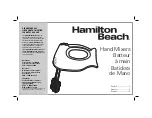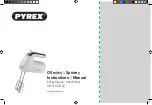
15
produce some wild and unpredictable results. Experimentation is key
to discovering new timbres!
VCA
VCA
stands for Voltage Controlled Amplifier. A VCA is an amplifier
with the output level set by a CV. A low value CV (close to zero) turns
off the output. As the CV increases, the output level increases too. This is
used to control the loudness of a signal.
Envelope Follower
An
envelope follower
is a special type of circuit that detects the
amplitude of a signal and generates a control voltage that varies with
the amplitude. If the input signal is very quiet, then the output of the
envelope follower is a very low voltage. If the signal is loud then this
voltage is larger. In the FreqBox the envelope follower is routed to
modulate the frequency of the VCO. Since the envelope follower follows
the dynamics of your instrument's signal, you can actually 'play' the VCO
as you play your instrument – the louder you play the higher the VCO
frequency.
In the FreqBox, the VCO output is sent to a VCA that is modulated
by the envelope follower. This allows the dynamics of your playing to
control the loudness of the VCO signal, so that when there is no input
signal you can’t hear the VCO at the output, even though it is always
oscillating. Because the envelope follower is using an audio signal for
detecting amplitude, it is normal for a small amount of "ripple" to ride on
the envelope follower CV. The ripple is also related to frequency, such
that there is more ripple on low notes than high notes. Note that some
instruments have really complex tonal characteristics that may cause a
lot off ripple. For instance some hollowbody guitars and acoustic guitars
have resonances that create peaks in their frequency response. These can
mean that the envelope follower will have a great deal more ripple. It is
normal in the FreqBox to hear a little of the ripple amplitude modulating
the VCO if the Sync switch is OFF, especially from low notes played on
your instrument.
Содержание moogerfooger MF-107 FreqBox
Страница 28: ...28 Notes...














































